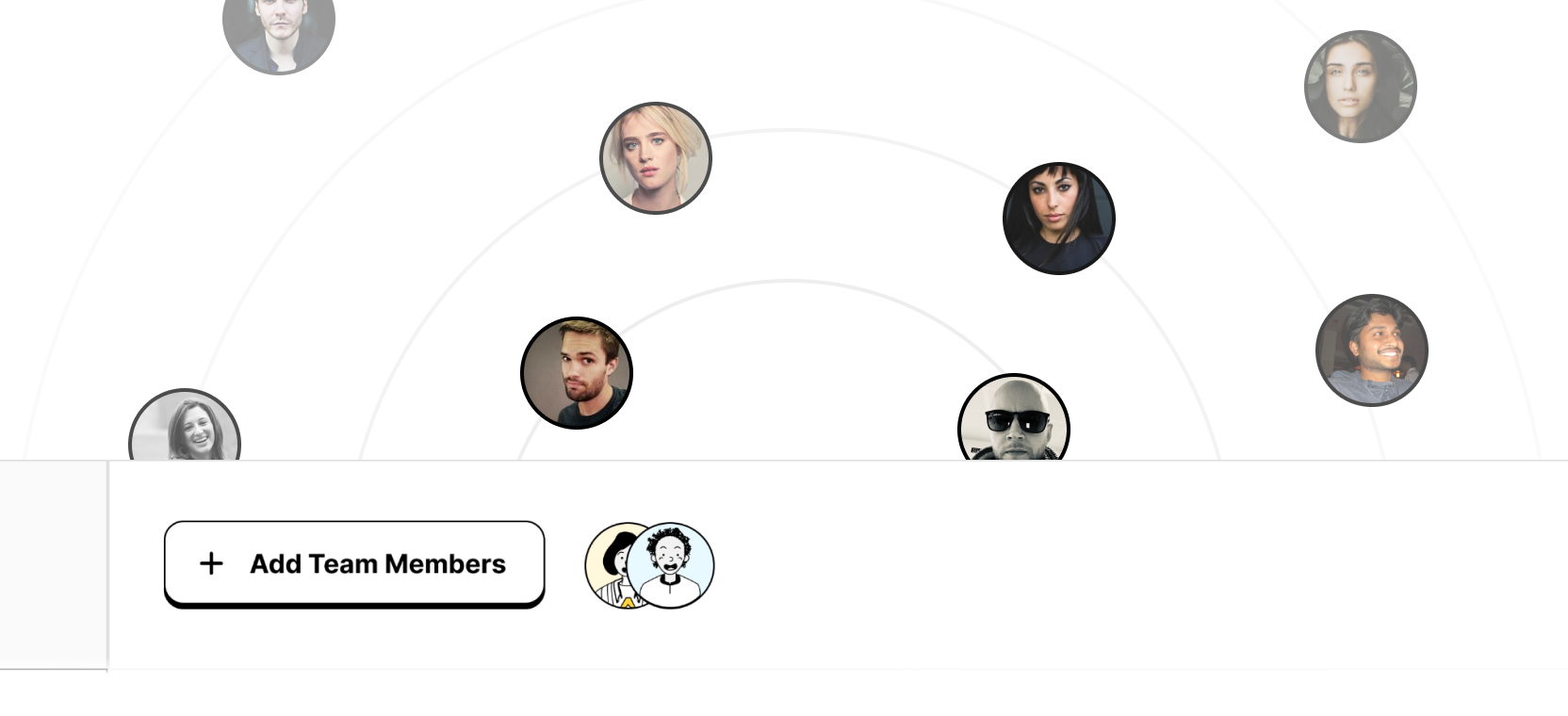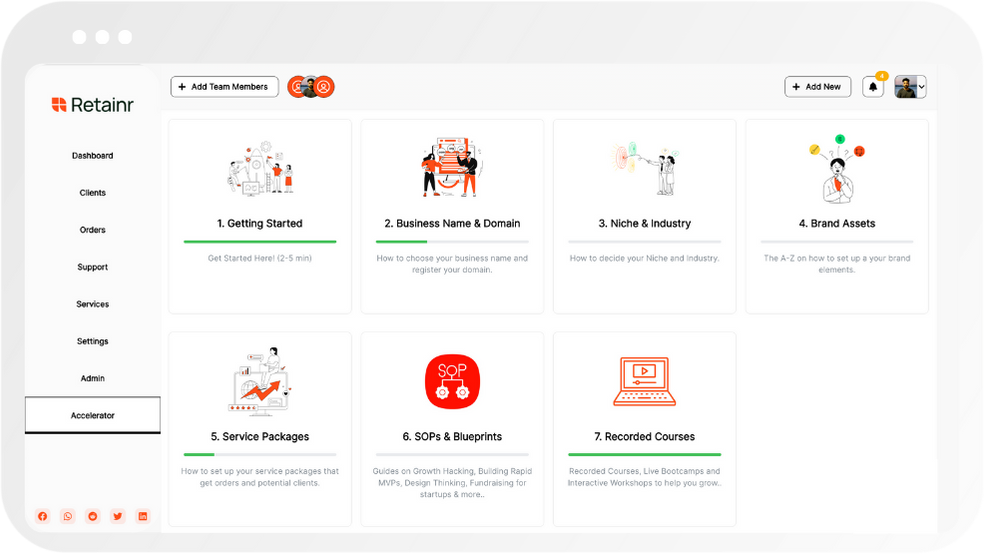
How to Measure and Improve YouTube Ads
Build with Retainr
Sell your products and services, manage clients, orders, payments, automate your client onboarding and management with your own branded web application.
Get Started1. How can I measure the performance of my YouTube ads?
Measure the Performance of YouTube Ads
Measuring the performance of your YouTube ads is critical to understand the effectiveness of your marketing efforts. There are several metrics available in the YouTube analytics tool that can help you do this:
- View count: This shows the total number of times an ad has been viewed.
- Engagement: This includes actions like likes, shares, and comments on your ad. It shows how engaged your viewers are with your content.
- Click through rate: It is the percentage of viewers who click on your ad after seeing it. A high click-through rate usually indicates that viewers find your ad relevant.
- Conversion rate: The number of viewers who take the desired action after viewing your ad, such as making a purchase or signing up for your newsletter.
- Watch time: The total amount of time viewers spent watching your ad. It measures viewer engagement and interest.
You can easily access these metrics from YouTube’s built-in analytics tool.
Improve YouTube Ads
Once you have measured the performance of your YouTube ads, you can work on improving them. Here are some strategies you can use:
- Improving targeting: Using your ad performance data, you can refine your audience targeting to improve ad relevance and boost conversion rates.
- Creating engaging content: Actively engage with your audience through likes, comments, and shares. This can increase your ad's visibility on YouTube.
- Optimizing ad placements: Placement of your ad can impact its performance. Try different ad placements to see which performs best.
- Testing different ad formats: YouTube offers various ad formats like skippable and non-skippable ads, discovery ads, etc. Experiment with these formats to find out which one works best for your brand.
| Metrics | Strategies |
|---|---|
| View count, Engagement, Click through rate, Conversion rate, Watch time | Improving targeting, Creating engaging content, Optimizing ad placements, Testing different ad formats |
2. What are the key metrics to consider while assessing the performance of YouTube Ads?
Key Metrics for Assessing YouTube Ads
When it comes to evaluating the success of your YouTube ads, there are several key metrics which need consideration. These are primarily classified into three categories: viewability metrics, interaction metrics, and audience metrics.
Viewability Metrics
- View Rate: It signifies the percentage of users who viewed your ad after it was served to them. Higher view rate indicates that your ad is resonating with the audience.
- Impressions: This is the total number of times your ad was displayed. High impressions can lead to greater brand awareness.
- Video Played To: It indicates the portion of your video ad users watched. For example, 25%, 50%, 75%, or 100%.
Interaction Metrics
- Click-Through Rate (CTR): This is the percentage of users who clicked on your ad after viewing it. It provides insight into the ad's direct response effectiveness.
- Engagement Rate: This signifies the percentage of users who interacted with your ad in any way, such as liking, sharing, subscribing, or commenting.
- Conversion Rate: It tracks the percentage of users who completed the desired action after clicking on your ad, like making a purchase or signing up for a newsletter.
Audience Metrics
- Unique Users: It shows the number of distinct users who viewed or interacted with your ad.
- Average View Frequency: It signifies the average number of times a user viewed your ad.
- Average Impression Frequency: This indicates the average number of times your ad was served to a user.
| Metrics | Viewability | Interaction | Audience |
|---|---|---|---|
| 1 | View Rate | Click-Through Rate (CTR) | Unique Users |
| 2 | Impressions | Engagement Rate | Average View Frequency |
| 3 | Video Played To | Conversion Rate | Average Impression Frequency |
3. How can I improve the performance of my YouTube ads?
Work on Your Ad Targeting
Improving the performance of your YouTube ads mainly relies on targeting the right audience. First, ensure you have set the right demographics by factoring in the age, sex, geographical location, and other relevant characteristics of your target viewers. Other strategies include:
- Interests Targeting: This leverages the interests, habits, and behaviors of your audience. For instance, if you sell sports gear, target viewers who show interest in sports-related videos.
- Placement Targeting: Here, you select specific YouTube channels or videos where your ads will appear.
- Keyword Targeting: This uses specific words related to your products/services during search on YouTube or Google.
Improve Your Ad Content
Your content significantly impacts how viewers respond to your YouTube ads. The ad needs to be engaging, informative, and compelling to persuade viewers to take the desired action. Here are some tips:
- Start with an engaging hook that grabs the viewer's attention in the first few seconds.
- Craft a compelling story that connects with the viewer emotionally.
- Include a clear and compelling call to action (CTA).
Implement A/B Testing
Finally, consider implementing A/B testing, also known as split testing. This involves creating two or more versions of your ad to identify which performs better. The goal is to compare different variants and optimize based on the results. Here is a simple table of what you need to test:
| Component to Test | Example |
|---|---|
| Headline | Test different headlines to see which one attracts the most clicks. |
| Video Length | Try both shorter and longer versions of your ads to establish the ideal length. |
| Call to Action (CTA) | Experiment with different wording, positioning, or design of your CTA. |
4. What techniques can I use to measure the success of my YouTube ad campaign?
Key Metrics to Measure YouTube Ad Campaign Success
The success of your YouTube ad campaign can be measured using several key performance indicators (KPIs). These include:
- Views: The number of times your ad has been watched.
- View Rate: The percentage of views relative to the number of impressions.
- Click-through Rate (CTR): The percentage of people who clicked on your ad after watching it.
- Conversion Rate: The percentage of viewers who followed your call to action and performed the desired action.
- Watch Time: The amount of time a viewer spent watching your ad.
- Engagement Rate: The level of interaction with your ad shown by likes, shares, and comments.
Using YouTube Analytics and Google Ads Platform
YouTube Analytics and Google Ads platform provide comprehensive tools to track progress and measure the performance of your ads. In YouTube Analytics, you can measure metrics like watch time, audience retention, engagement rates, and demographic data of the viewers. Meanwhile, with Google Ads you can track views, CTR, conversion rates, cost-per-view (CPV), and total cost. Below is a small example of how a typical metric table might look like:
| Metrics | Values |
|---|---|
| Views | 5000 |
| CTR | 5% |
| Conversions | 200 |
Strategies to Improve YouTube Ad Campaign Success
To improve the success of your YouTube ad campaign, several strategies can be implemented:
- Optimizing Ads: Use A/B testing to optimize your ads, regularly updating with the most successful versions.
- Targeting: Be sure to target your ads accurately. Use demographics, interests, and viewing habits to refine your audience.
- Engaging Content: Make sure your content is engaging enough to keep the audience interested. Use calls to action in your video.
- Performance Analysis: Regularly analyze your performance and adjust your marketing strategy as needed.
5. How can YouTube Analytics help in measuring and improving the performance of my YouTube Ads?
Understanding YouTube Analytics
YouTube Analytics is a powerful tool that provides different metrics to provide insight into how your advertisements are performing. For instance, it offers metrics like 'Watch time,' 'Audience Retention,' 'Traffic Source,' and 'Demographics', each beneficial in their own way. 'Watch time' tells you the total amount of time users spent watching your ads. 'Audience Retention' shows how often viewers watched your ad till the end. 'Traffic Source' helps identify where the viewers came from, and 'Demographics' provides information about the age, gender, and geographical location of your viewers. By understanding these metrics, you could modify your marketing campaign to better cater to your audience's interests.
Using YouTube Analytics to Improve Ads
By analyzing your YouTube Ad metrics you can gauge the effectiveness of your present marketing strategies and make necessary improvements. For instance, if 'Audience Retention' is low, this indicates that viewers are not watching your ads till the end. It suggests a need for a more engaging video content. Similarly, if 'Traffic Source' indicates a majority of your audience is coming from a specific platform, it implies that you could benefit from focusing more on that platform. Using this kind of insight allows you to target your ads more strategically to reach the right audience.
Example of YouTube Analytics Use
| Metrics | Performance | Plan of Action |
|---|---|---|
| Watch Time | Low | Try making shorter or more engaging ads. |
| Audience Retention | Low | Ensure that the first few seconds of the ad are captivating. |
| Traffic Source | Majority from Social Media | Invest more in social media marketing. |
| Demographics | Mostly young adults | Produce content that attracts the young adult demographic. |
To summarize, YouTube Analytics is your guide to understand exactly what is working and what is not with your YouTube Ads. By providing you with comprehensive metrics, it helps you strategically plan your campaign. Improve your ad watch time, enhance audience retention, target the correct sources and focus on appropriate demographics to ensure maximum effectiveness of your YouTube Ads.
6. Can I track conversions resulting from my YouTube ads?
Tracking Conversions Resulting from YouTube Ads
Keeping a tab on conversions resulting from YouTube Ads is a critical part of any marketing strategy. With the right resources and tools, YouTube allows advertisers to track conversions that help in measuring the effectiveness of their advertising campaigns. Logistics of tracking conversions can be tackled in two ways - by using Google Ads Conversion Tracking or Google Analytics.
Google Ads Conversion Tracking
Google Ads Conversion Tracking provides insights into what happens after a customer interacts with your ads – whether they make a purchase, sign for a newsletter, call your business, or download your app. The steps to set this up are as follows:
- Login to your Google Ads Account.
- Navigate to the "Tools & Settings" Tab and click on "Conversions".
- Click on the '+ Conversion' button and choose the type of conversion you want to track.
- Follow the prompts to set up your conversion tracking.
Google Analytics
Google Analytics allows you to track the actions users take on your website after viewing your video ads. Below is a simple setup guide:
- Set up a Google Analytics account if you don't have one.
- Link your Google Analytics account to your YouTube account.
- Set up goals in Google Analytics to track desired customer actions.
- Enable Auto-Tagging in Google Ads to track ad performance.
| Method | Pros | Cons |
|---|---|---|
| Google Ads Conversion Tracking | Easy set-up. Directly integrated with Google Ads. Accurate conversion data. | Only tracks conversions from Google Ads. Limited insights into user behavior. |
| Google Analytics | Tracks all conversions. In-depth user behavior insights. Can track multiple goals. | More challenging to set up. Data can be overwhelming to beginners. |
7. Can optimizing the placement and targeting of YouTube Ads improve their performance?
Understanding the Impact of Ad Placement and Targeting
The optimization of ad placement and targeting is a significant element to consider in improving YouTube ad performance. This is because the efficiency of an ad greatly depends on whether it is being presented to the right audience, at the right time, and in the right place. Understanding where your ads are being shown, and to whom they are being shown, can help to shape your ad's performance. Improving these aspects can boost your ad's visibility, increase click rate, enhance user interaction, and ultimately, improve your return on investment (ROI).
- Placement: It determines where your ad appears on YouTube. This could be anywhere from a user's homepage feed, to specific videos or in certain channels.
- Targeting: Involves defining your audience based on variables such as demographics, interests, and behaviors.
Implementing Methods to Optimize Ad Placement and Targeting
To optimize ad placement and targeting, one method is to conduct A/B testing. This process involves running two different versions of an ad simultaneously to see which performs better. This can be done by altering the placement or targeting options between the two versions. The results of these tests can then be used to refine future ad campaigns for improved performance.
| Version A | Version B |
|---|---|
| Ad displayed in user's homepage feed | Ad displayed in specific videos |
Measuring the Performance of Your Optimizations
After making adjustments to your ad placement and targeting, it's crucial to measure the impact of these changes. You can do this by monitoring key performance indicators (KPIs) such as impressions, click-through rate (CTR), watch time, and conversions. Keeping a close eye on these metrics will not only help to confirm whether the optimizations have had a positive impact, but can also inform future ad strategies.
- Impressions: The number of times users have seen your ad.
- CTR: The ratio of users who click on a specific link to the number of total users who view the ad.
- Watch time: The total amount of time that a viewer has watched your ad.
- Conversions: The number of desired actions taken after a viewer watches your ad, such as making a purchase or subscribing to a channel.
8. How can I use Keyword Planner to improve the effectiveness of my YouTube Ads?
How to Use Keyword Planner for Improved YouTube Ads
The Google Keyword Planner is a valuable tool utilized for search engine optimization (SEO) and is equally useful for making your YouTube ads more effective. It provides insights into the frequency of certain keywords, the competition for them, and their cost-per-click (CPC). More specifically, the Keyword Planner can be used to:
- Discover new target keywords relevant to your product, service, or content.
- Understand the estimated search volume for specific keywords.
- Gain an understanding of the competitiveness of keywords.
- Forecast potential impressions and cost per click.
By applying these insights to your YouTube ads, you could potentially increase your advertisement's visibility, engagement, and efficiency. Below is an example of how to apply these insights:
| Action | Application |
|---|---|
| Discover Target Keywords | Use these for relevant video descriptions and ad text. |
| Understand Keyword Volume | Target high-volume keywords to reach a wider audience. |
| Assess Keyword Competitiveness | Avoid highly competitive keywords to reduce ad costs. |
| Forecast Impressions & CPC | Budget your ad campaign accordingly for maximum effectiveness. |
In conclusion, the Google Keyword Planner is an invaluable tool for boosting the effectiveness of your YouTube Ads. By applying its insights to your YouTube marketing strategy, you can strategically target keywords, optimize your ads, and ultimately improve their overall performance.
9. Is there a way to measure audience engagement for my YouTube Ads?
Measuring Audience Engagement for YouTube Ads
Indeed, there are various methods to measure audience engagement for your YouTube Ads. Audience engagement metrics provide insights into how viewers are interacting with your videos. These can be accesses through YouTube's built-in analytics tool, which provides data on view count, likes and dislikes, shares, comments, and watch time. Audience retention shows the percentage of your video that viewers watched and also indicates when viewers stopped watching your video. Paying attention to these metrics can help you fine-tune your ad content and target audience for better engagement.
Steps to Access Audience Engagement Metrics
- Navigate to YouTube Studio from your channel page.
- Click on 'Analytics' on the left side menu.
- Find and click on the 'Engagement' tab.
- You'll be able to see various engagement metrics such as watch time, average view duration, and audience retention.
Improving Audience Engagement for YouTube Ads
After measuring your audience's engagement, the next step is to improve it. One effective method is running A/B tests. Create two versions of the same ad with slight differences in elements like video content, thumbnail, title, or call-to-action, then analyze which performs better. Further strategies include:
| Strategy | Description |
|---|---|
| Create Engaging Content | Make sure your ad's content is relevant, interesting, and adds value to keep your audience's attention. |
| Optimize Video SEO | Use appropriate keywords, meta descriptions, and tags to make your video easily discoverable. |
| Interact with Your Audience | Engage with users by responding to comments and encouraging them to like, share, or subscribe. |
10. How can the watch time of my YouTube Ads be improved?
Improving the Watch Time of YouTube Ads
Often, one of the key performance indicators of YouTube ads is the watch time. Longer watch times indicate that viewers are genuinely interested in your content, leading to higher chances of converting these viewers into potential customers. Here are some strategies that can help improve your YouTube Ads watch time:
- Quality Content: Prioritize valuable and engaging content. Your ad needs to provide value to the viewer which consequently makes them interested in watching till the end.
- Targeted Audience: Make efforts to target your ad towards a specific audience. Understanding who your audience is enables you to create content they can relate to.
- Optimized Video Length: Make sure your video is not too long or too short. A video that is too long might bore viewers leading them to skip your ad, while a video that is too short may not fully convey your message.
Monitoring YouTube Ads Watch Time
In order to improve your ads' watch time, it is necessary to monitor and measure the performance of your ads. YouTube Analytics provides detailed insight into how your ads are performing. Here is how you can use it to monitor your ad's watch time:
| Step | Description |
|---|---|
| 1. Access YouTube Analytics | Sign in to your YouTube account, select the channel for which you want to analyze the watch time and then look for the Analytics section. |
| 2. Navigate to Watch Time Reports | In the Analytics section, find and select the 'Watch Time' reports. |
| 3. Analyze the Data | Review the data provided in these reports. This will give you insight into the average view duration of your ads and the watch time over specific periods. |
Implementing Changes Based on Data
After tracking and understanding the watch time of your YouTube ads, you can start implementing changes for improvement. This may involve refining your content strategy, optimizing video length or redefining your target audience amongst other things. It is always beneficial to experiment with different strategies to find one that works best for your ads.
Conclusion
Measuring and Improving YouTube Ads: A Simple Guide
Advertising on YouTube is imperative for digital marketers aiming to reach a large and engaged audience. Understanding how to measure and improve your YouTube Ads is key to leveraging this platform effectively and ensuring ROI.
Measuring YouTube Ads
To measure the effectiveness of your YouTube Ads, one needs to monitor the right metrics. Some of these include:
- View Rate: An indicator of how many people viewed your ad compared to those who had the chance to view it.
- Click-Through Rate (CTR): It shows how many people clicked on your ad upon viewing it.
- Engagement: This includes actions such as liking, sharing, or commenting on your ad.
Improving YouTube Ads
Once empirical data is collected, strategies to enhance your YouTube advertisements can be implemented:
- Target the Right Audience: Customize your ads based on the demographics, interests, and behavior of your ideal customer.
- Create Compelling Content: Engaging content encourages more interaction from viewers.
- Optimize for Mobile: Most YouTube views come from mobile devices, hence ensuring that the ad looks good on mobile can significantly improve results.
It's true that managing, measuring, and improving YouTube ads can be a time-consuming process. This is where Retainr.io comes into play. Offering tools to sell, manage clients, orders, and payments with your own branded app. By organizing your client’s data and advertising details in one place, it simplifies the entire process and save you time and effort.
Let Retainr.io Ease Your YouTube Ads Management
Retainr.io is a necessity for businesses looking to streamline their advertising game. It assists you in handling your clients, orders, and payments under one roof with your own tailor-made application. It’s the perfect tool to measure and improve your YouTube ads without the hassle. Embrace simplification and maximize outcome with Retainr.io.
Boost Your Agency Growth
with Retainr Accelerator
Uncover secrets, strategies, and exclusive blueprints to take your agency's growth to the next level — from marketing insights to effective presentations and leveraging technology.

SOPs, Cheatsheets & Blueprints
Leverage 50+ SOPs (valued over $10K) offering practical guides, scripts, tools, hacks, templates, and cheat sheets to fast-track your startup's growth.
Connect with fellow entrepreneurs, share experiences, and get expert insights within our exclusive Facebook community.
.jpg)

Join a thriving community of growth hackers. Network, collaborate, and learn from like-minded entrepreneurs on a lifelong journey to success.

Gain expertise with recorded Courses, Live Bootcamps and interactive Workshops on topics like growth hacking, copywriting, no-code funnel building, performance marketing and more, taught by seasoned coaches & industry experts.

.jpg)

.jpeg)


